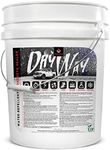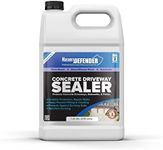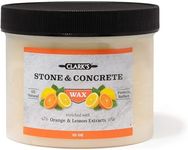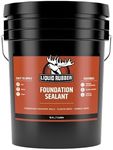Buying Guide for the Best Concrete Sealer
Choosing the right concrete sealer is important to protect and enhance the appearance of your concrete surfaces, whether it's a driveway, patio, garage floor, or walkway. The right sealer can help prevent damage from water, stains, chemicals, and weather, while also making cleaning easier and sometimes improving the look of the concrete. To make the best choice, you should consider where and how the sealer will be used, the type of finish you want, and how much maintenance you're willing to do.Type of SealerThe type of sealer refers to the chemical makeup and how it works to protect the concrete. The main types are penetrating sealers, acrylic sealers, epoxy sealers, and polyurethane sealers. Penetrating sealers soak into the concrete and are great for outdoor use because they protect against water and deicing salts without changing the look. Acrylic sealers form a thin film on the surface and can add a glossy or matte finish, making them good for decorative concrete but may need more frequent reapplication. Epoxy and polyurethane sealers create a thicker, durable layer and are often used indoors or in garages for their strong protection and shiny finish, but they can be slippery when wet. To pick the right type, think about whether you want to keep the natural look, need heavy-duty protection, or want to enhance the appearance.
Finish (Gloss Level)The finish or gloss level describes how shiny or matte the surface will look after sealing. Sealers can be available in high-gloss, semi-gloss, satin, or matte finishes. High-gloss finishes make the surface look shiny and can highlight colors and patterns, but they may also make the surface slippery and show dirt more easily. Matte or satin finishes give a more natural look and are less slippery, which is often preferred for outdoor walkways or pool decks. Your choice should depend on whether you want to enhance the appearance or keep it subtle, and if slip-resistance is important for your area.
Durability and LongevityDurability and longevity refer to how well the sealer stands up to wear, weather, and chemicals, and how often it needs to be reapplied. Penetrating sealers usually last the longest, sometimes several years, especially outdoors. Acrylic sealers may need to be reapplied every 1-3 years, while epoxy and polyurethane sealers can last longer but may require more careful application. If you want less maintenance, look for a sealer known for its long-lasting protection, especially in high-traffic or harsh weather areas.
Application MethodThe application method is how the sealer is put onto the concrete, such as by roller, brush, or sprayer. Some sealers are easier to apply and dry quickly, making them suitable for DIY projects, while others may require more careful preparation and professional equipment. If you plan to apply the sealer yourself, choose one with simple instructions and tools you are comfortable using. For large or complex areas, or if you want a flawless finish, you might consider a sealer that is compatible with professional application.
BreathabilityBreathability means how well the sealer allows moisture vapor to escape from the concrete. This is important because trapped moisture can cause the sealer to peel or the concrete to crack. Penetrating sealers are usually more breathable, making them a good choice for outdoor surfaces or areas where moisture is a concern. If your concrete is in a damp area or you live in a climate with freeze-thaw cycles, prioritize a breathable sealer to avoid future problems.
Slip ResistanceSlip resistance is how much grip the sealed surface provides, especially when wet. Some sealers, especially high-gloss or thick coatings, can make surfaces slippery. If you are sealing a pool deck, walkway, or any area where people might walk when it's wet, look for a sealer that is labeled as slip-resistant or can be mixed with a non-slip additive. This will help keep the area safe for everyone.

















